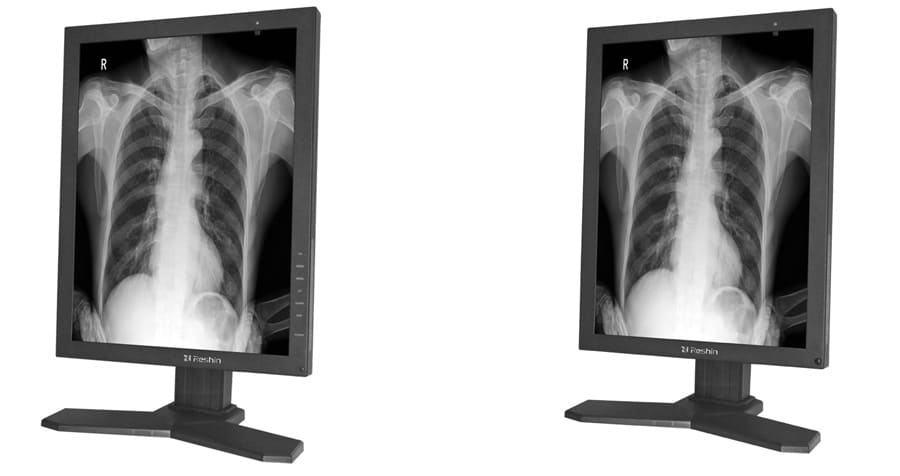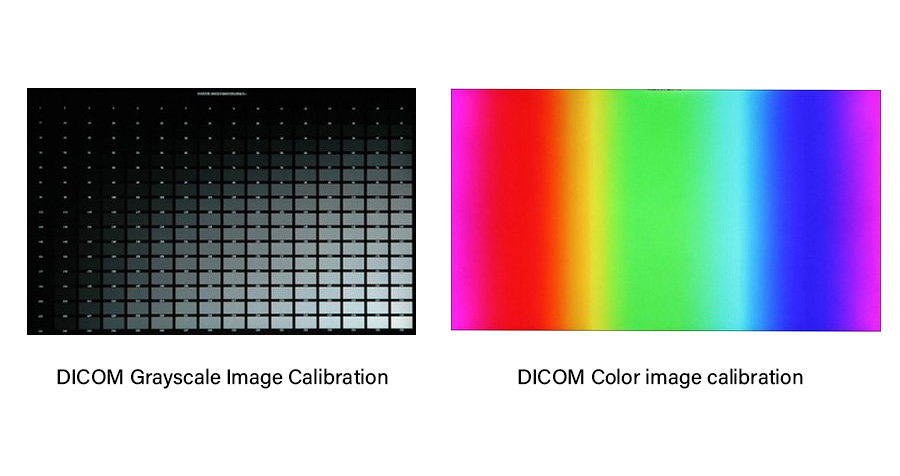In today’s medical world, doctors use many digital images every day. These images come from X-rays, CT scans, MRIs, and ultrasounds. A medical diagnostic display is an important tool that helps doctors see these images clearly. To make sure the images are shown correctly, the display must show the right shades of gray, brightness, contrast, and colors. One key technology to achieve this is called DICOM calibration. In this article, we will explain what DICOM calibration is, why it is important, and how you can choose the right medical display for your needs.
1.The Main Role of Medical Diagnostic Displays
Medical diagnostic displays are not like regular computer screens. They are used to show medical images in great detail. These displays must show 512 shades of gray so that doctors can see even the smallest differences in an image. This is important because small differences may show early signs of a disease. With many digital images now used in hospitals, it is very important that the images look the same on every screen. DICOM calibration helps to make sure that every image is shown accurately and safely.

2.What is DICOM Calibration?
DICOM stands for Digital Imaging and Communications in Medicine. It is an international standard that makes sure medical images are stored and shared in a common format. DICOM calibration is a process that makes sure a medical display shows images with the correct shades of gray, brightness, contrast, and colors.
Here are some simple points about DICOM calibration:
- Gray Scale Standard: The display must show 512 levels of gray. This helps doctors see small differences in images.
- Brightness and Contrast Control: The screen must keep a steady brightness and contrast, even if the light in the room changes.
- Color Accuracy: Sometimes, colored images like those from ultrasound or pathology tests need to show real colors. DICOM calibration helps the screen show accurate colors.
- Adaptation to the Environment: Medical displays often work in different lighting conditions. DICOM calibration helps the display work well even in bright or uneven light.
3.Why is DICOM Calibration Important?
3.1 Better Diagnosis
Doctors rely on small details in medical images to make decisions about a patient’s health. If the display is not calibrated correctly, some details may be lost. DICOM calibration makes sure that every small detail in the image is shown clearly. This helps doctors find problems early and make the right decisions.
3.2 Consistency Between Hospitals
Hospitals often share medical images. If different hospitals use displays that are not calibrated in the same way, the same image might look different on each screen. This can cause confusion. Using DICOM calibration makes the image look the same everywhere, which helps doctors from different places agree on a diagnosis.
3.3 Reducing the Risk of Mistakes
Sometimes, mistakes in reading images can lead to a wrong diagnosis. A poorly calibrated display might hide important details or change the look of an image. With DICOM calibration, the risk of such mistakes is reduced, which makes the treatment safer for patients.
3.4 Helping Doctors Work Better
Doctors work long hours and need reliable tools. A display that is correctly calibrated saves time because doctors do not have to worry about the screen showing wrong details. This makes their work easier and gives them more confidence when they look at the images.

4.Is DICOM Calibration Needed in Every Case?
While DICOM calibration is very useful, it is not always needed for every display. Here are some points to think about:
- Diagnostic Use vs. Regular Office Use: For screens used to make important medical decisions, DICOM calibration is almost a must. For other screens in a hospital office or waiting area, the need is less critical.
- Large Hospitals vs. Small Clinics: Big hospitals and special imaging centers need calibrated displays more because they do many diagnostic tests. Smaller clinics or departments that only do basic imaging may choose less expensive options.
- Cost and Budget: High-end displays with DICOM calibration are usually more expensive. Some hospitals may need to balance the cost with the benefits. In some cases, they might choose to upgrade the most important devices first and delay others.
5.How to Choose the Right Medical Display
When choosing a medical diagnostic display, there are many factors to consider besides DICOM calibration. Here are some simple guidelines:

5.1 Resolution and Screen Size
A high resolution helps show small details. A larger screen can make it easier for doctors to see both the whole image and the small parts. Choose a screen size and resolution that fit the needs of the department.
5.2 Color and Gray Scale Accuracy
The display must show the correct shades of gray and, when needed, the right colors. This is very important for images where even slight color differences can help show a disease.
5.3 Brightness and Contrast Adjustment
The screen must work well in different lighting conditions. Some displays have features that reduce glare, so the image remains clear even in bright rooms.
5.4 Calibration System and Software Support
A good medical display often comes with calibration software. This software helps the display stay in good condition over time. It can automatically adjust the screen so that it always meets the DICOM standard. Also, check if the manufacturer offers good customer service and technical support.
5.5 Brand Reputation and Certification
Medical displays must be reliable and safe. Choose brands that have good reputations and certifications, such as CE or FDA approval. These certifications show that the display meets strict international standards.
6. How DICOM Calibration Works in Simple Terms
Here is a simple explanation of how DICOM calibration works:
- Measuring the Screen: A special device measures the brightness, contrast, and colors of the display.
- Comparing with Standards: The measurements are compared with the DICOM standards. If the display does not match the standard, adjustments are needed.
- Automatic Adjustment: The calibration software adjusts the screen’s settings until the display shows the correct shades and brightness.
- Verification: After the adjustments, the screen is measured again to make sure it now meets the standard.
It is a good idea to calibrate the display regularly, maybe every 3 to 6 months. This keeps the display working correctly even after a long time of use.
7. Conclusion: Choose Wisely for Better Diagnosis
To sum up, DICOM calibration is a very important technology for medical diagnostic displays. It helps make sure that medical images are shown accurately, which is very important for making the right diagnosis. For hospitals and imaging centers, buying displays with DICOM calibration can be a smart investment. For screens that are only used for office work, the need for DICOM calibration might be lower.
When you are choosing a medical display, look at all the important features: resolution, size, color accuracy, brightness, contrast, and how easy it is to calibrate. Also, consider the brand and whether it has good certifications. A well-chosen display not only helps doctors work better but also keeps patients safe.

